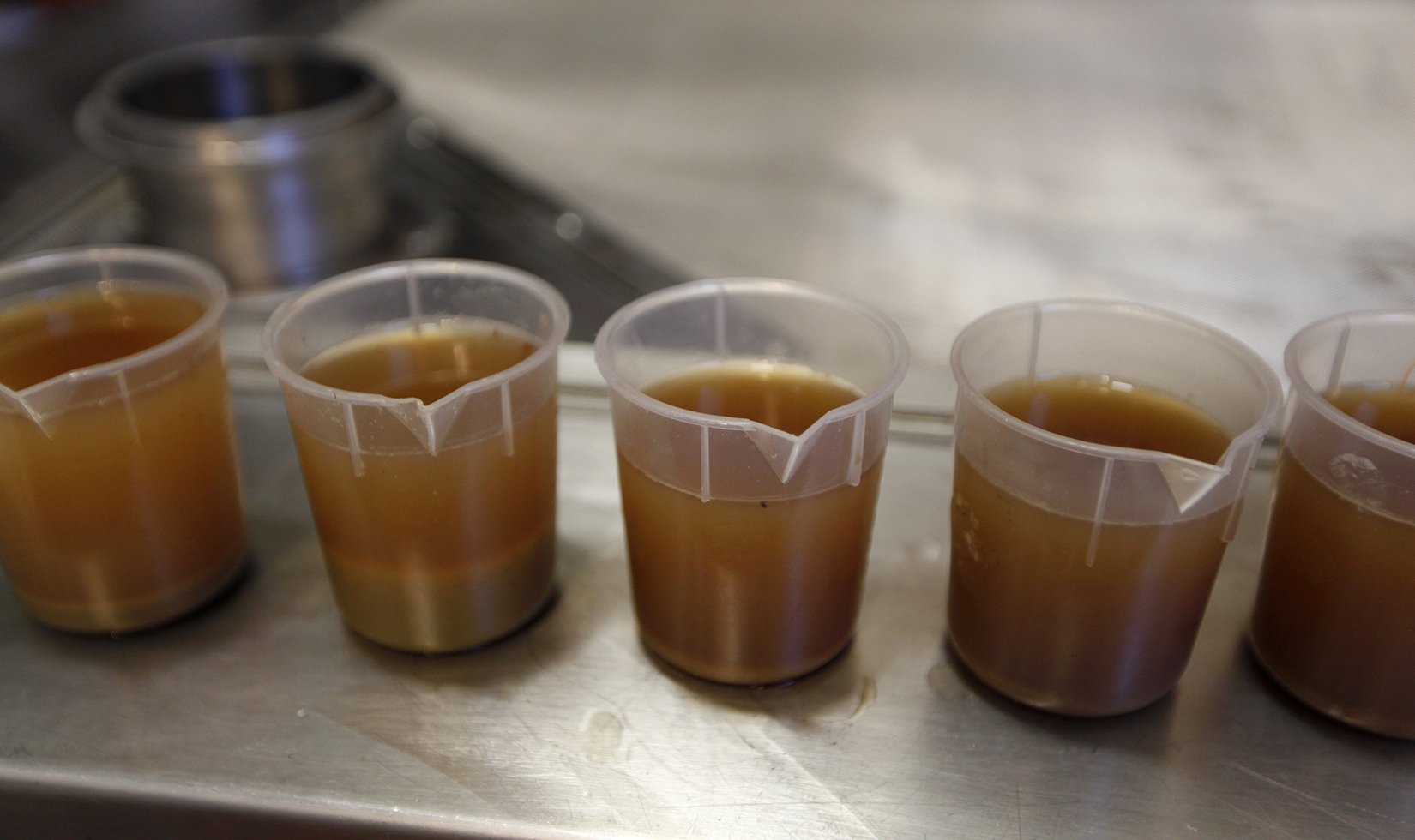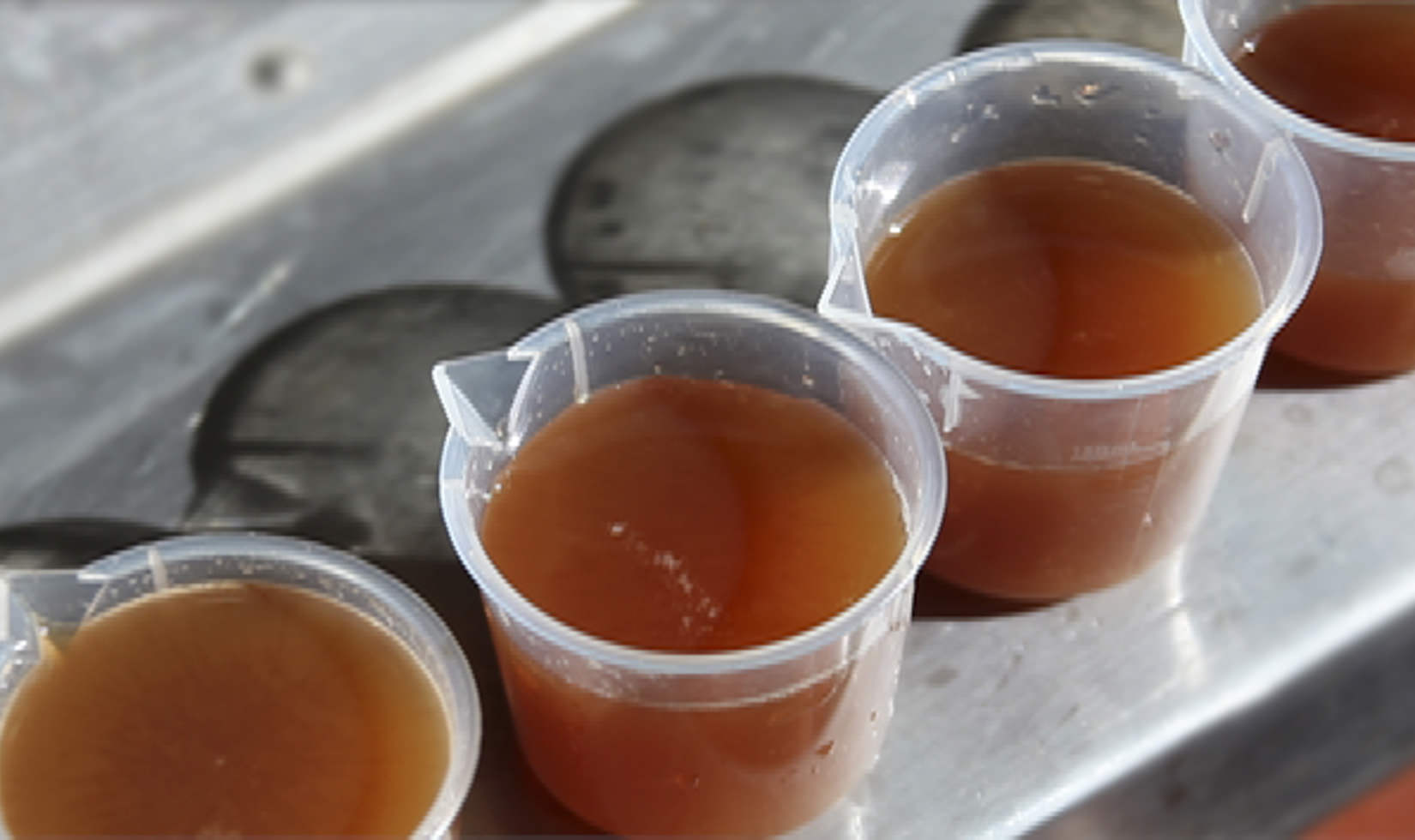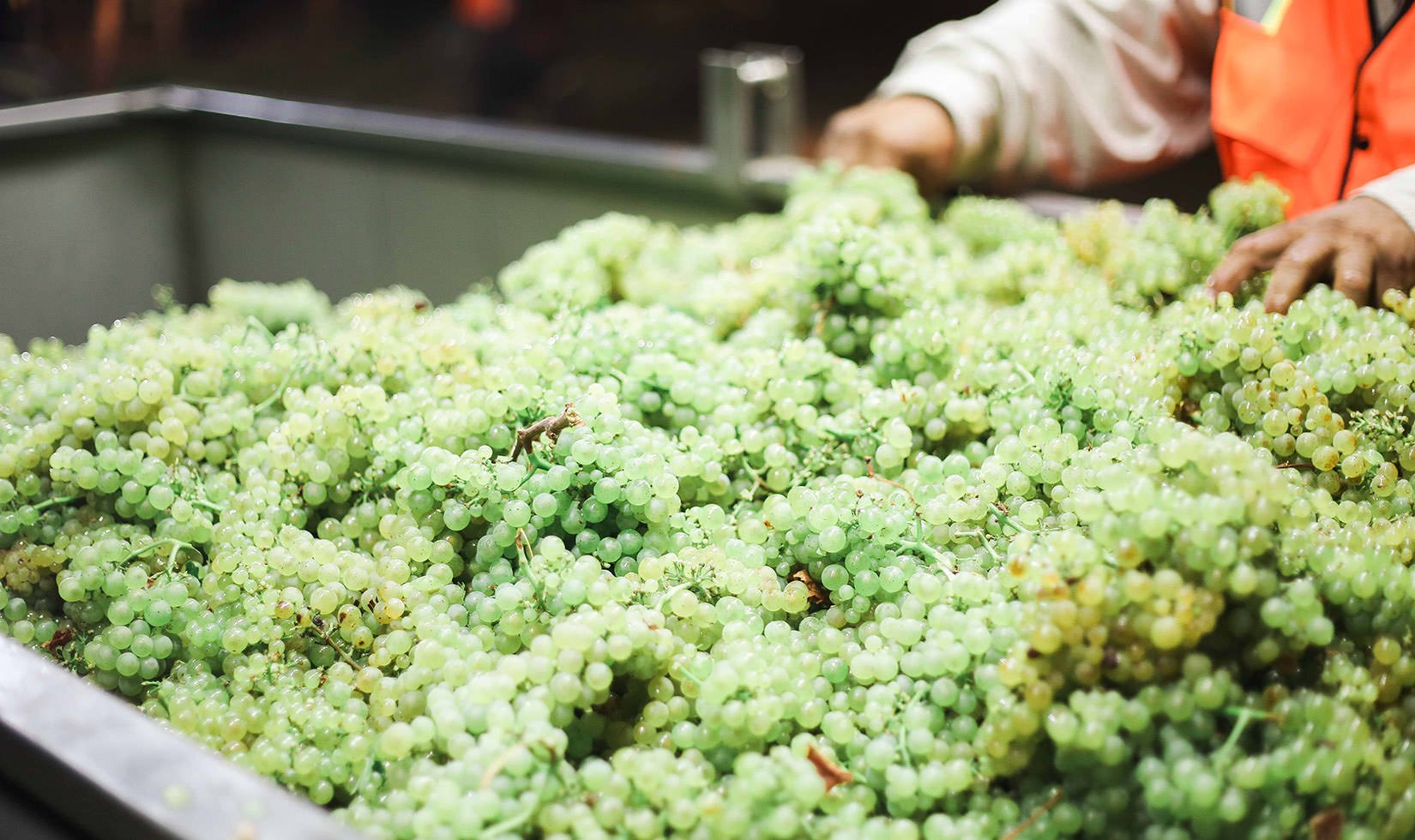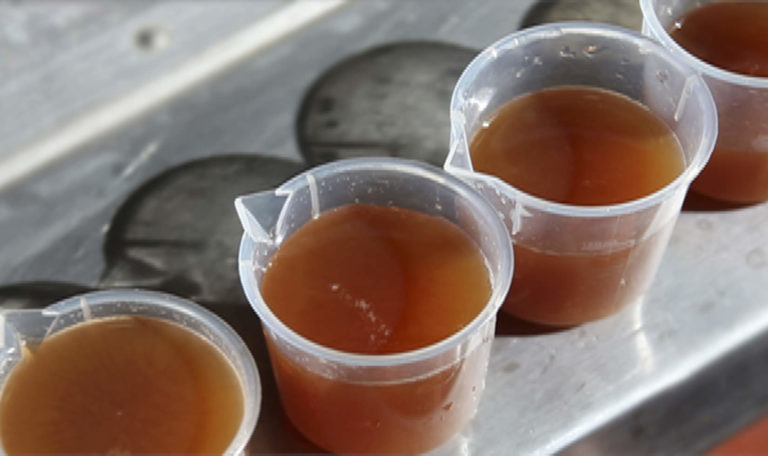Every September during grape harvest season, Jordan Chardonnay is already beginning its transformation. This blog post offers a glimpse into the winemaking process of wine press cuts–determining when to step pressing the juice from the grapes to ensure the purest fruit flavors are captured in the wine.
Understanding Wine Press Cuts in the Winemaking Process
After passing through the destemmer and across the sorting table, Chardonnay grapes–still firm and cool from the night harvest–are then transported to our Willmes membrane bladder press. Within this cylindrical press, two membranes (one on each side) are inflated like balloons, allowing for an extraordinarily gentle pressing of the grapes in between them. This gentle nature reduces the tearing of the grape skins and seeds common in other bladder press designs.
In contrast to the winemaking process for reds, most white wines are produced with little to no skin contact. As a result, suspended solids and phenolic character (potential bitter and astringent components found in the skins and seeds) will be minimized in the juice, enabling the fresh and crisp aromatics of the Chardonnay grape to remain delicate and shine to their fullest potential.
While the Willmes press greatly reduces the phenolic character, it is impossible to press Jordan Chardonnay grapes free of it. Therefore, we employ separate press fractions in order to determine which cuts will move on towards the chance of making their way into the final blend of Jordan Russian River Chardonnay–and which will be declassified and sold off as bulk. Each press fraction will contain different ratios of pure juice to increasing levels of phenols, and it is the well-developed palates of Winemaker Rob Davis, Assistant Winemaker Maggie Kruse, and our cellarmaster that will make the distinction of which press cuts to keep and nurture in the cellars as Jordan Chardonnay. They will be paying attention to increasing levels of the fine solids of each pressing, the lowering of acidity, a change in viscosity and any bitterness from grapes skins that were over-exposed to sun.

The above photo illustrates the results of a press series for a single batch of 2012 Jordan Chardonnay grapes. The first juice collected (farthest to the left) is called “P1.” This is the juice that runs from the original hopper during the sorting process before the grapes even make it to the press. Basically, P1 is a rinse of the grapes with their own juice. The second cup holds the “Free Run,” the juice that runs out of the press as it is being filled. The free run is clean and largely free of and skin and seed phenolic character. Cups three through seven are the “Press Cuts” in which the phenolic character gradually increases with each pressing, but the quality of the wine is still within our strict standards. A white ring will be placed around the press fraction that is determined to be the last acceptable cut, after which, the remaining cups, termed “Final Cuts,” will be declassified and sold off as bulk.
The concept of winemaking is relatively simple, but the making of great wine is in the details.




